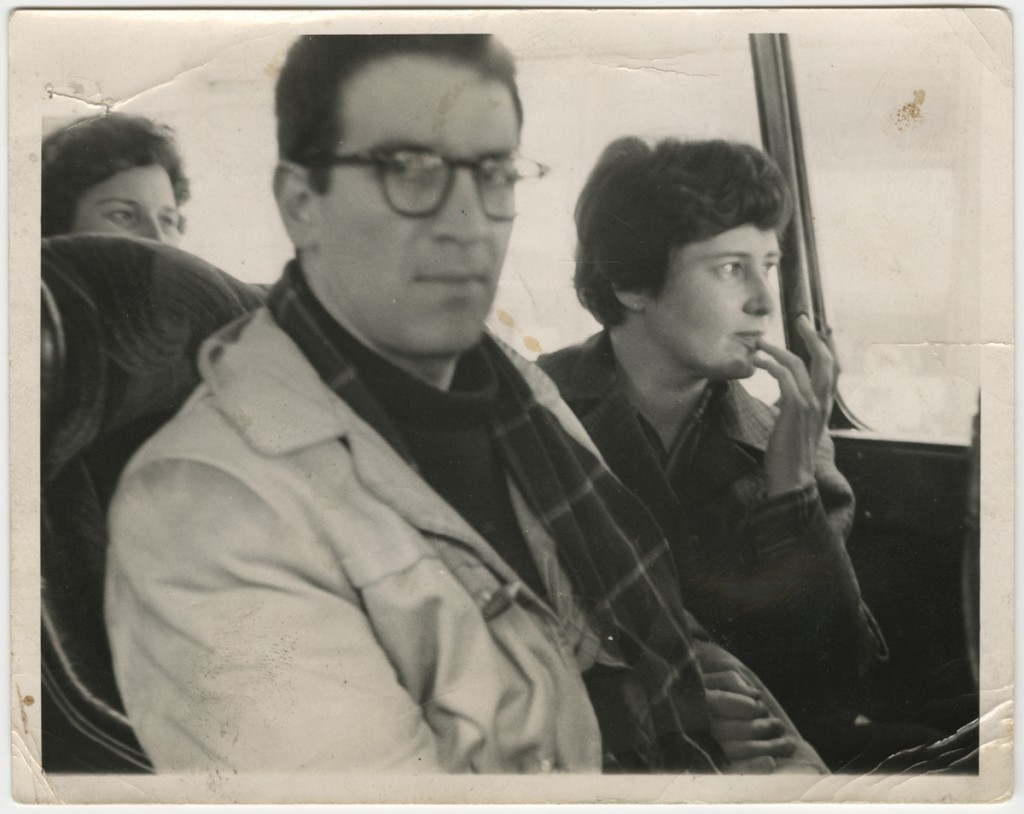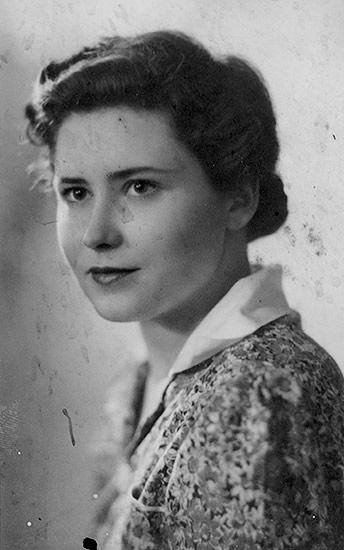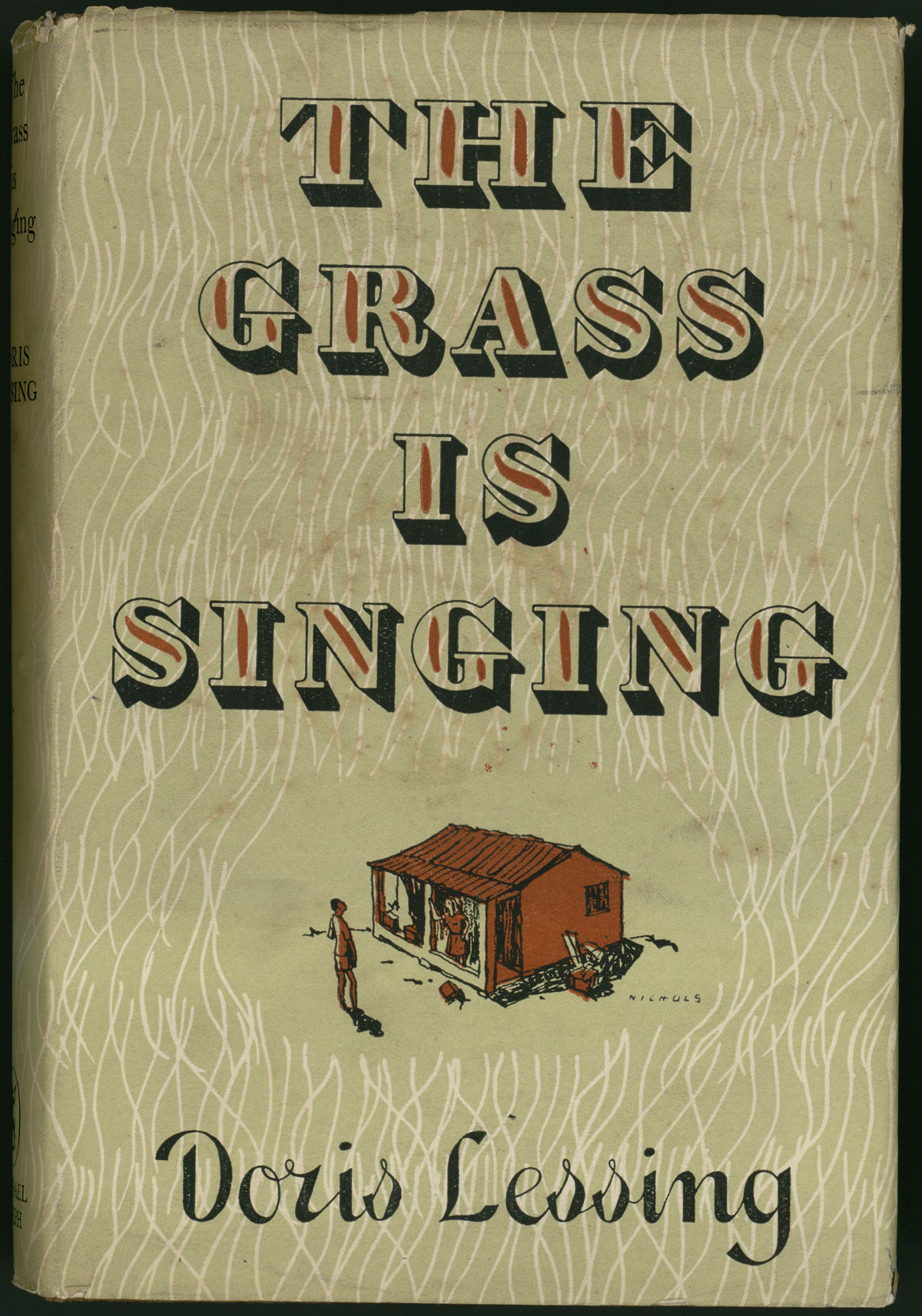“Have you had a look in the Knopf collection?” Rick Watson, the head of reference services at the Ransom Center, sounded casual, and I wasn’t sure I had time to take the detour he was suggesting.
I spent a month at the Ransom Center last year, working mainly with the extensive Doris Lessing archive. It is a wonderfully diverse selection of materials from across her career, and an almost complete collection of her typescripts from the 1970s to 1999.
I felt I had my hands full already. My interest is in Lessing’s creative process. She is often dismissed as a mainly “political” writer who was little interested in the quality of her prose. But I think she was more painstaking than is usually supposed, and that the impatience and urgency that informs her fiction is part of its style.
One afternoon I decided to pursue Watson’s suggestion. I found three references to Lessing in the Knopf collection. The first two were mundane letters related to the editorial processes for two of her novels. The third related to The Grass is Singing, Lessing’s first novel, which was published in 1950—but not by Knopf.
Lessing recounts why in the second volume of her autobiography, Walking in the Shade (1997):
Alfred Knopf in New York said they would take the book, if I would change it so that there was an explicit rape, “in accordance with the mores of the country”. This was Blanche Knopf, Alfred’s wife, and the Knopfs were the stars of the publishing firmament then. I was furious. What did she know about the “mores” of Southern Africa? Besides, it was crass. The whole point of The Grass is Singing was the unspoken, devious codes of behaviour of the whites, nothing ever said, everything understood, and the relationship between Mary Turner, the white woman, and Moses, the black man, was described so nothing was explicit.
The folder I discovered in the Knopf collection filled in further details of this story.
In a letter dated January 3, 1950, Mrs. Robert Shaplen (“for Alfred Knopf Inc.”) wrote to the literary agent Naomi Burton at Curtis Brown, Ltd. She said that Knopf was “tremendously impressed” with the novel and “would like to make an offer” subject to some changes, including to the ending:
It seems to us that the curious, well-developed relationship between Mary Turner and Moses is not carried through to its logical and emotionally necessary conclusion, but ends inconclusively, so that his murder of her is not the satisfactory resolution of a dissonance, but a mere full stop. Moses must rape the unfulfilled and half-willing Mary, and then murder her out of a mixture of disgust and fear. We are not asking this for any reasons of sensationalism, but simply because it seems to us the logical, and indeed, inevitable, climax to the story.
It seemed at first as though Lessing had agreed to the majority of Knopf’s suggestions. On February 3, 1950, Naomi Burton wrote to Mrs. Robert Shaplen at Knopf: “Here is what Juliet O’Hea [Lessing’s UK agent] writes concerning a talk she had with DL about the book: ‘I have had a further talk with her and she would be willing to do all the Knopf revisions with the exception of putting in the rape which she feels would be quite wrong.'”

Nearly two weeks later, however, the situation changed. On February 14, Burton reported that an offer had been cabled and “the following extremely unsatisfactory reply” had been received: “LESSING DOES NOT WANT TO BE PUBLISHED BY KNOPF”.
What, if anything, had changed? Lessing had a counter-offer, from Crowell, another publisher, who was willing to publish the novel as it stood. But it emerged that there was more to it than that. The remaining two letters are between Alfred Knopf and Spencer Curtis Brown. On February 15, Knopf wrote to say he found how Curtis Brown had handled the matter “offensive” and to confirm that they had been happy to publish the book without the proposed rape scene. Spencer Curtis Brown replied on February 23:
I think you are under the impression that [Lessing] only decided not to revise the book after she had the Crowell offer. That’s not the case. [S]he had decided she wasn’t going to alter the book for anyone. Her actual words were: “Damn all publishers – you can’t expect me not to have my tongue in my cheek after all these pontifical and contradictory pronouncements.” The attraction of the Crowell offer was not the terms they offered or their distribution or their prestige but merely the fact that they were the first publishers who liked the book as it stood […] You may think she was foolish but I don’t think she has been dishonest.
Although it appears at one remove, Lessing’s voice sounds authentic in this letter; it echoes down the years to the Lessing who teased the journalists on her doorstep on the day she won the Nobel Prize. Yet Lessing at this stage was an unpublished novelist, which makes her fierce independence even more striking.

Perhaps the most curious aspect of Curtis Brown’s letter is this aside at the end:
This has no bearing on the situation whatever, but for your personal information I cannot stand the woman and consider her dogmatic, conceited and over-emotional. None of that, however, affects my belief that we were right to support her and I believe that you would have felt the same way. If we only acted for authors who were wholly sane or wholly pleasant neither you nor I would have very many authors to deal with.
Lessing’s career was marked by a fierce determination to stick to her own judgement. This episode gives us both a glimpse of Lessing as a young unknown writer and a typical example of her courage.
—By Tom Sperlinger
Tom Sperlinger is Reader in English Literature and Community Engagement at the University of Bristol in the United Kingdom. His research was supported by a Hobby Family Foundation Endowment from the Ransom Center.
The Ransom Center annually awards more than 50 fellowships to support projects that require substantial on-site use of its collections. To learn more about the fellowship program and the application process, visit www.hrc.utexas.edu/fellowships.
Related content:
Finding aid for Doris Lessing’s archive found here.
Finding aid for Alfred Knopf’s archive found here.
Read more stories in our Fellows Find series
Receive the Harry Ransom Center’s latest news and information with eNews, a monthly email. Subscribe today.


